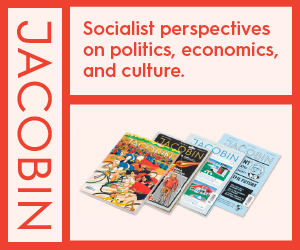Climate justice and the prospect of power
A balance sheet of the movement to block the cross-Toronto ‘Line 9’ pipeline project

Photo by Mark Klotz
Umair Muhammad’s post on my blog, “Let’s commit to the long haul,” reviews the record of an anti-pipeline movement in which both he and I have been active. He concludes that “while we were good at organizing efforts against particular harmful projects and initiatives, we did not have a broader strategy for social change.”
Umair criticizes today’s activists for their “tepidness about power” and challenges us to “work with institutional forms that can deliver protracted challenges to the status quo.” In short, he asks us to set the goal of building a movement to take and exercise power.
Our present efforts for social change, he says, are limited to “marches, demonstrations, blockades and occupations, sprinkled in among always-ongoing public education efforts,” and suffer for the lack of a political party that can enable a freedom movement to triumph.
Umair recalls the words of the great socialist thinker William Morris, who said that to build a new socialist order working people must acquire “power enough to compel.”
Striving to exercise power
Umair is right to argue that pervasive individualism undermines today’s movements for social change. But the movements themselves represent a different logic, that of collective action and solidarity. William Morris’s concept of “power to compel” may sound harsh, but in fact it is fundamental to all today’s social reform activity.
The prospect of power resides not only in the long-term goal of government but also in today’s actions that take steps in that direction. For example, employers must be not merely requested but compelled to pay the minimum wage; corporations must be compelled by the populace to halt environmental devastation.
Often we call on the government to apply compulsion, but on some occasions we do it ourselves, temporarily, through our own efforts in demonstrations, in occupations, or on barricades. Sometimes we apply compulsion more durably, by shifting the relationship of forces so greatly that a destructive corporate project becomes unfeasible (example: the stalemating of the Northern Gateway pipeline across BC).
The movement to block ‘Line 9’
The “No Line 9” movement in which Umair and I have been active has the same logic of compulsion. The goal was to prevent the federal government and Enbridge Inc. from imposing on us an environmentally destructive tar sands pipeline running from Sarnia to Montreal.
During the first years of the “No Line 9” struggle the government of the day, headed by Stephen Harper and closely allied with petroleum corporations, declared increased sales of tar sands oil to be crucial to Canada’s future. Harper’s police branded pipeline opponents as potential subversives and terrorists. We did not spend much time trying to reason with Harper and his crew.
During a planning meeting for a Toronto “No Line 9” teach-in held in November 2012, it was suggested that our aim must be to overturn this government. Recalling my youthful escapade in the elections of 1957, I wrote at the time that this would not be the first time a pipeline controversy figured in the downfall of a government (see Canada’s Pipeline Wars of the 1950s).
That scenario did in fact reappear in the fall of the Harper government 58 years later.
The movement matures
But in 2012 the prospect of overturning Harper seemed distant and even fanciful. The Line 9 project was then almost unknown, unmentioned by the media. The pipeline had been in place pumping conventional oil for several decades, and the tar sands menace was not then well understood. When Toronto No Line 9 activity started up in 2013, our small movement focused on threat of a tar sands oil spill and how that would menace public safety. But our call was not merely for safety measures; we boldly demanded outright cancellation.
We also highlighted the overall threat posed by tar sands extraction to the world’s climate and especially to poor and vulnerable peoples. We stressed support of Indigenous peoples resisting pipeline colonialism.
As Umair mentions, our activity took many forms, “occupations,… pressuring politicians, hosting public education events, and getting the media to cover the issue,” and much more. Gradually our street-corner canvassing began to show better results: we were having an impact.
Different facets of our activity were mutually supportive. Thus increased public support made the police cautious in moving against our prudently organized occupations at pipeline construction sites. Direct actions, in return, generated media coverage that was rarely granted for street marches, even when several thousand participated.
Confronting the pipeline owners
The official hearings held by the government regulator (the National Energy Board or NEB) in the fall of 2013 were farcical: inconvenient ideas were summarily excluded; citizens were barred even from submitting a letter without special permission. The discredited NEB bulled ahead regardless of protests, and the Line 9 project was approved in the spring of 2014.
At that point major environmental NGOs pulled out of the Line 9 movement. But our main victories were still to come. Three times the Toronto City Council, on our urging, passed supportive motions, and the NEB felt compelled to impose two postponements which delayed pipeline start-up by a year.
As Umair says, the delays cost the pipeline owner, Enbridge Inc., $100 million. That was direct spending on additional safety measures ordered by the NEB. By another measure, the value of oil not shipped during the delay was in the billions.
For a new type of government
Many lessons were learned during this experience. This acquired understanding was reflected in a new statement of purpose worked out in collective discussion by my community committee, East End Against Line 9, in mid-2014. It reads as follows:
We are an independent committee of East End Toronto residents opposing a dangerous plan to pump hazardous tar sands oil across our city. In this regard, East Enders support the front-line efforts of the Indigenous peoples along the entire Line 9 route in defending their land rights.
We oppose the shipment of toxic tar sands and fracked oil through Toronto, whether by pipeline or rail. We call for an end to Canada’s addiction to fossil fuels, the main cause of climate change, and a rapid transition to a clean energy economy.
We also call for a government that is responsive to the needs of Canadians, of future generations, and of those people around the world feeling the most severe impacts of climate change.
For these No Line 9 activists, the question of government had certainly been posed.
Downfall of the Harper regime
Despite further gains during 2015, the Line 9 pipeline moved inexorably toward activation, and our movement had fewer and fewer cards to play. Some participants moved on to new concerns, and momentum was slackening. But our efforts were now merging into something much bigger: an amorphous but broad climate justice movement with significant clout in national politics. (See note, “The Meaning of Climate Justice,” below.)
The Harper regime was thrown out in the September 2015 federal elections, in no small measure because of its hostility to climate action and its servility to Big Oil and its unpopular pipeline projects. The new government, headed by Justin Trudeau, promised to respond to concerns of climate and pipeline activists. Many longstanding opponents of Harper now became supporters of the Trudeau regime.
But the ruling Liberals, while very different from Harper in style, are no less committed to expansion of oil production and infrastructure, including tar sands pipelines. So too is the New Democratic Party.
The Leap Manifesto’s role
Six months into the Trudeau government, at the April convention in Edmonton of Canada’s labour-based party, the NDP, delegates voted to replace the party’s leader and endorsed an anti-pipeline climate justice program, the Leap Manifesto, as a basis for discussion. Right-wing media reacted with alarm: Canada’s big-business elite was not prepared to permit one of its three major parties to go into opposition on fossil fuel policy.
There was a burst of public controversy over tar sands pipelines and a major effort by Big Oil to build support for its planned expansion of tar sands production. Meanwhile, some Leap Manifesto supporters joined with others to launch the People’s Climate Plan, a campaign to challenge the ambiguities and shortcomings of government policy in the climate action field. This effort is proceeding well (see reports on events in June and July, 2016).
During these years of sustained confrontation with government, all three major political parties have remained firm in supporting Big Oil’s insistence on greatly expanding fossil fuel production and transportation, regardless of the disastrous impact on the world’s climate.
This fact underlines the challenge posed by Umair’s article: The climate justice movement needs a strategy for power and a political instrument – a party – to pursue it.
Characteristics of a party
The first thing to note here is that the climate justice movement itself has taken on many characteristics of a party, including sustained engagement with party politics, government, and power. Its struggle has demanded skills in timing, alliances, tactics, strategic orientation and a talent for connecting with popular concerns that are characteristic of a party. Through the Leap Manifesto, the movement even made a bid to win a major political party to its banner. In all these respects, the climate justice movement has strengths necessary for a political party – strengths that are less prominent among socialist groups.
The movement also has many shortcomings. I will mention only three of them:
- Most climate advocacy is carried out by NGOs, which are usually structured along corporate lines and – except at the lowest level – typically do not have a culture of collective discussion and decision making.
- The political clout of climate activism far exceeds the number of activists involved. York University, for example, is located right beside Line 9, but only a few students followed Umair’s example by joining No Line 9 activity.
- Climate justice activists usually have a vision that society must undergo some kind of “system change” but often have few developed ideas on what that would entail.
Climate justice activists have certainly not found a path to transformational change. But they cannot be expected to discover that on their own. Such a strategy will emerge from the experiences of all working people and all arenas of struggle, both here and worldwide, both present and past.
Toward a party of transformative action
Here is where the socialist movement, whose program seeks to generalize all these experiences, can help activists find a road to power. But this will not achieved not merely by education but also by participation in the struggle.
More than 100 years ago, Engels, Kautsky, Lenin, and other socialists conceived of building a party of transformational change as a “merger of socialism with the workers’ movement.” (See note below on the “merger concept.”) That same process is needed today, in the form of socialism’s fusion with advanced labour and social movements. Such a “merger” a few years ago contributed to the formation of a new left party in Quebec, Québec Solidaire.
This type of merger – still a distant goal – will see many social activists increasingly grappling with the tasks of building a movement that can contest for power and help spark transformational change. This goal also requires that socialists, for their part, pay close attention to the experiences and lessons of activist movements.
Umair Muhammad’s Confronting Injustice itself provides a fruitful example of such a fusion of activist insight and socialist understanding.
Umair Muhammad is a graduate student at York University. He is the author of “Confronting Injustice: Social Activism in the Age of Individualism.”
This article originally appeared on John Riddell’s blog.










